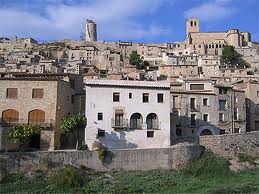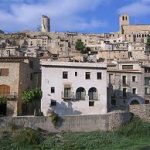Source: Forbes.com
6 May 2012
By Cecilia Rodriguez
It was one of those small, curious stories that make it into almost every global news outlet: To fight a national economic crisis bringing
hardship and crushing debt to a tiny municipality, the government and residents of Rasquera , Spain, in February unveiled plans to start growing marijuana. Then in April the town council approved the measure, followed by a successful referendum of the 1,000 inhabitants.
You can guess the rest: The news spread like wildfire and the previously unknown Spanish hamlet in the northeast of Catalonia and southwest of Barcelona became the center of nationwide debate, tourist interest and international curiosity. Journalists from around the world flooded its narrow, provincial streets, tourists to Catalonia put it on their itinerary, and the center-right Spanish government issued solemn statements condemning the move as illegal.
The idea is to rent seven hectares (17 acres) of the town’s land to the Barcelona Private Consumption Cannabis Association (ABCDA ) to grow marijuana for the “recreational and therapeutic use” of its 5,000 members. The plan would provide 40 jobs and bring up to €1.3 million to the town in two years – enough to pay off all its debts.
Spanish law permits the cultivation of marijuana in small amounts for private use. As a consequence, in recent years numerous cannabis clubs like ABCDA have sprung up across the country, with courts accepting the argument that small plantations providing marijuana for a limited number of people are not illegal. The rules are strict: Each member must calculate and order just the amount of pot he or she needs for a few months. The club may then plant only enough to meet that specific demand.

Rasquera’s plan has received so much attention because of the potential example it sets for other villages and towns in Spain and other European countries suffering from staggering unemployment, deep recession, and decline as their youth leave in search of work. It also has revived the old debate over legalization of cannabis as a response to the reality of illegal drug traffic and widespread use – and as a creative, if controversial, municipal strategy in times of economic crisis.
Rasquera’s dilemma is heard in many other Western countries, where the popularity of cannabis intersects with the grey zone of illegality – for instance in the United States where, despite its prohibition it can be grown and sold for medical use in 17 states (‘medical use’ being oosely defined and controlled in California, for example).
Spain’s position is somewhat unique. Its geographical situation makes it Europe’s port of entry for Moroccan hashish, as well as one of the E.U.’s prime marijuana growers. The economics are irresistible: One gram sells for about €6, while one cannabis plant can produce €1,000 of product. As a result, pot growing inside and outside in houses, gardens. warehouses and farms around Spain has exploded over the past few years.
In that context, Rasquera’s plan seems neither unreasonable nor farfetched.
Nevertheless, the proposal won’t pass the national test. The central government has already threatened to jail anyone found growing marijuana plants in large amounts.
At least the 15 minutes of fame haven’t hurt. “The stores have had new clients,” one local told a Spanish newspaper. “The bread and olives have been sold out every day.” And the newly-attracted tourists have discovered Rasquera’s non-narcotic charms: beautiful scenery, excellent goat cheese and authentic, artisan olive oil.




 Creative Commons Attribution
Creative Commons Attribution